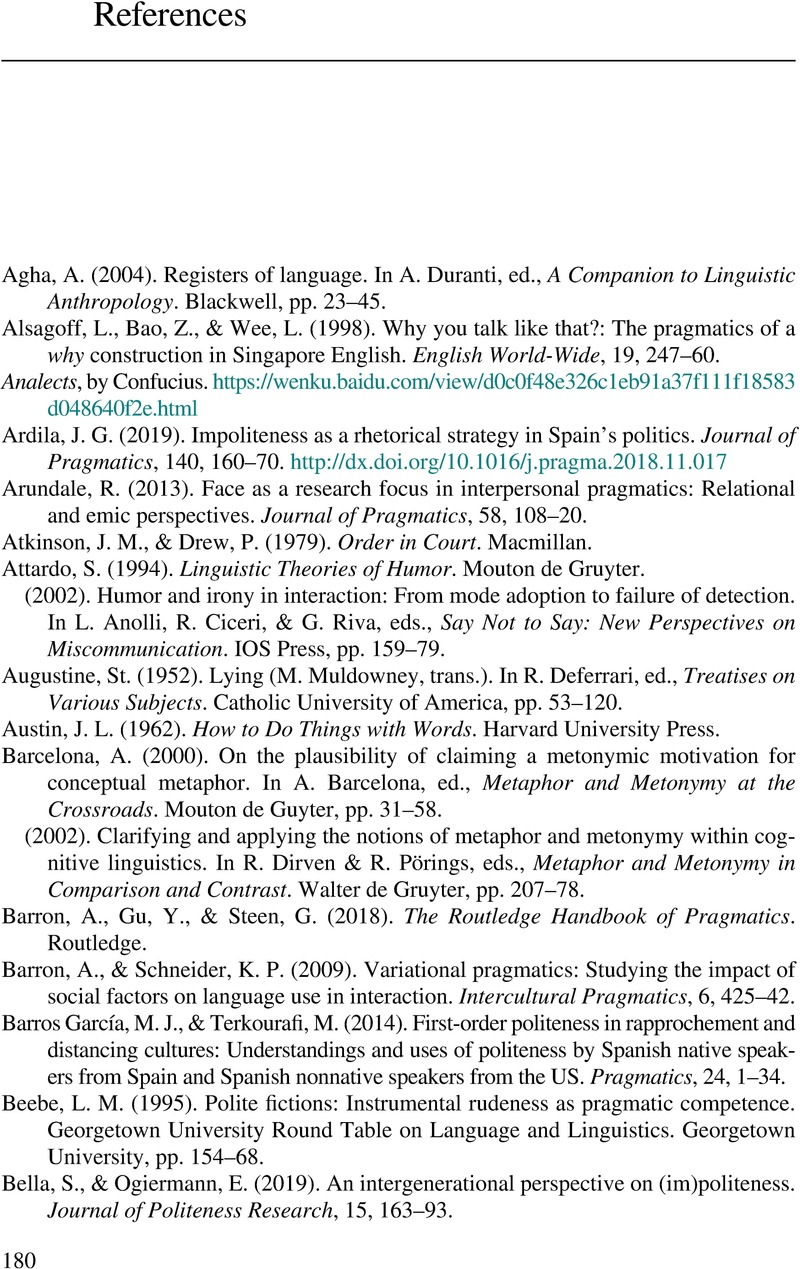Book contents
- Chinese Politeness
- Chinese Politeness
- Copyright page
- Dedication
- Contents
- Figures
- Tables
- Prologue
- 1 Pragmatics, Politeness, and Chinese Politeness
- 2 Hierarchy and Harmony: Roots of Chinese Face and Politeness
- 3 Chinese Face
- 4 Chinese Politeness and Theories of Politeness
- 5 Synchronic Consistency and Variation
- 6 Diachronic Stability and Change
- 7 In Comparison with East Asian Languages
- 8 In Comparison with English: An East-West Divide?
- 9 Politeness Theories
- Epilogue
- References
- Index
- References
References
Published online by Cambridge University Press: 02 November 2023
- Chinese Politeness
- Chinese Politeness
- Copyright page
- Dedication
- Contents
- Figures
- Tables
- Prologue
- 1 Pragmatics, Politeness, and Chinese Politeness
- 2 Hierarchy and Harmony: Roots of Chinese Face and Politeness
- 3 Chinese Face
- 4 Chinese Politeness and Theories of Politeness
- 5 Synchronic Consistency and Variation
- 6 Diachronic Stability and Change
- 7 In Comparison with East Asian Languages
- 8 In Comparison with English: An East-West Divide?
- 9 Politeness Theories
- Epilogue
- References
- Index
- References
Summary

- Type
- Chapter
- Information
- Chinese PolitenessDiachrony, Variation, and Universals in Politeness Theory, pp. 180 - 199Publisher: Cambridge University PressPrint publication year: 2023

